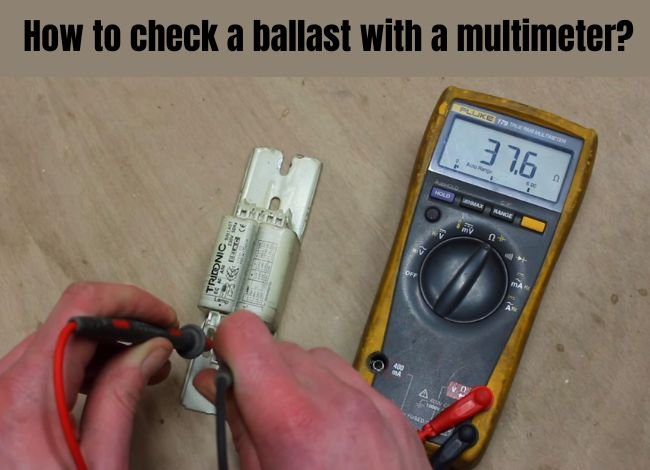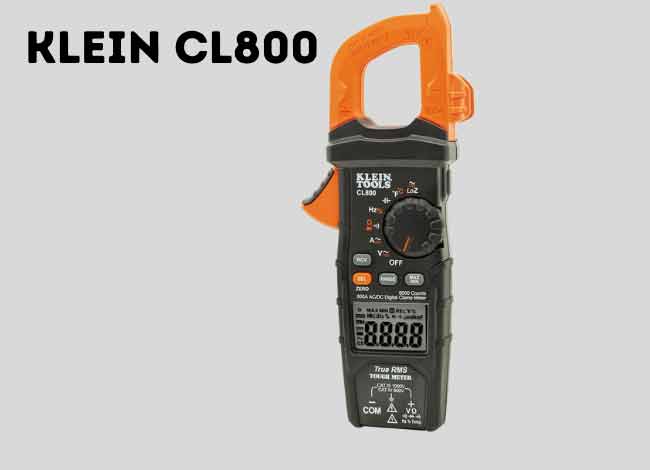Last Updated on December 28, 2024
When you want to measure AC/DC voltage, you have the option of using either a voltmeter or multimeter. However, it’s not that easy choosing between the two as some people lack experience using both of these instruments.
If you’ve been wondering which reliable meter to pick, you’re in the right place. Both a voltmeter and multimeter have their pros and cons. We’ll get into their similarities and differences so that you can select the best device for your needs.
Continue reading our Voltmeter VS Multimeter comparison to understand which device will match your needs and demands.
What are the similarities between voltmeter and multimeter?
- The main similarity between a voltmeter and a multimeter is that they both have analog and digital devices. Their analog versions are cheaper than their digital versions. Besides, a digital voltmeter and digital multimeter are great for performing advanced functions. They are also much easier to interpret than their analog versions.
- Both voltmeter and multimeter are electrical tools. As a result, they can function only in the presence of electricity in a circuit.
- Another similarity is that both of these tools can test the potential difference between two points in an electric circuit in volts or millivolt units.
What are the differences between voltmeter vs multimeter?
| Voltmeter | Multimeter |
| A voltmeter covers a narrow area of application. | Multimeter covers a wider area of application as it can handle several functions. |
| A voltmeter cannot substitute a multimeter. | A multimeter can substitute a multimeter. |
| A voltmeter can measure the only potential difference between two points in an electrical circuit. | A multimeter is a multi-purpose tool that can directly measure several parameters such as potential difference, resistance, current, capacitance, voltage, frequency, and much more. |
| A voltmeter is not usually utilized to measure diodes or transistors. | A multimeter can be used to measure both diodes and transistors. |
| If you want to measure the resistance of a circuit, you will have to acquire an ammeter as the voltmeter alone won’t manage. | A multimeter can directly be utilized to test the resistance of a circuit. Therefore, you don’t have to use a different ammeter. |
| Voltmeters are more affordable as they only measure a few parameters. | Multimeters are quite expensive as they come with multiple parts for measuring different parameters. |
How does a voltmeter work?
A volt is a unit of measure of the potential difference between two nodes. The work of the voltmeter is to measure this difference and deliver the results in volts. Note that voltmeters vary as some are made to work excellently with either alternating current (AC) or direct current (DC). Nonetheless, some voltmeters are made to measure both AC and DC.
Related article: What Does OL Mean On a Multimeter? Easy steps to measure
Before explaining how a voltmeter works, it’s crucial to know that there are digital and analog voltmeters. Digital voltmeters are slightly more straightforward to use than analog voltmeters, especially for DIYers.
An analog voltmeter comes with a current-carrying fine-wire coil. This coil becomes suspended around the external magnetic field; when this is done, you connect leads or clamps on the gadget to the power source you desire to measure. Next, the current flows through the voltmeter. When this happens, the current reacts with a magnetic field around the coil that starts to spin in response.
Later on, the rotation makes the needle move along the voltmeter, and that’s how you get to record the voltage. Note that this process is of an analog voltmeter and not a digital voltmeter. A digital voltmeter functions somehow differently. This is because it’s more resistant to outside magnetic interference and not at risk of any harm.
How does a multimeter work?
Similar to a voltmeter, a multimeter can also measure voltage. However, it does more than just measuring voltage. A multimeter can test other parameters such as resistance and current. And if you get an advanced automotive multimeter, it can measure other parameters such as capacitance, temperature, inductance, acidity, frequency, and relative humidity.
Besides, a multimeter’s range differs from 200mV to 2000 volts, meaning that you can utilize various common circuits with a great degree of accuracy. It’s also worth noting that analog multimeters are referred to as “VOMs,” meaning Voltage-Ohms-Amperes. On the contrary, the digital models are usually referred to as “DMM,” meaning digital multimeter. Some of the best digital meters are Fluke 324 and Fluke 289 True-RMS multimeter. These are also costlier than analog multimeters.
How to use a voltmeter/multimeter to measure voltage?
Using a voltmeter or multimeter is super easy. You just need to know some basic steps to operate the meter. Nonetheless, it would be best to observe safety to avoid blowing up the device or endangering your life.
Step 1: Set up the device
The first step is to prepare your multimeter or voltmeter to measure voltage. Many voltmeters and multimeters come with a large dial that you will use to set the mode. On the voltmeter, you will find a notation of V, which is intended to measure AC voltage, or V- meant to measure DC voltage.
Step 2: Select a range.
Many voltmeters, some with several options marked for voltage. This means you can change your meter’s sensitivity to acquire a good measurement and prevent damaging the gadget. But if your digital unit lacks range selection, it is “auto-ranging” and should detect the ideal range itself. The auto-ranging feature is found in a Klein mm600 1000V digital multimeter.
If you don’t know what to expect, select a setting higher than the maximum expected voltage. For instance, car batteries should be around 12.6V when fully charged, while household batteries usually have 9V or lower.
Step 3: Insert the test leads.
Most voltmeters and multimeters typically come with one black and one red test lead. Both of these leads feature a metal probe on one end and a metal jack on the other that is inserted in your voltmeter. Plugin the jacks to conduct the tests. Note that the blackjack always plugs into the hole with a notation “COM.”
Step 4: Hold the probes safely
Always exercise caution when conducting tests. Never touch the metal probes while connecting them to a circuit. If possible, wear electrically insulated gloves or buy replacement leads. Besides, two metal probes should never touch one another when they are connected to a circuit.
Related article: Which One is More Advanced Between Multimeter and Oscilloscope?
Step 5: Touch the black and red test leads to different parts of the circuit.
Tests the circuits for voltage by attaching the red and blacks leads in parallel. It would be great if you always started by touching the black test lead and then the red test lead.
Step 6: Raise the range.
If you ever get an overload while conducting the test, you should instantly raise the range to a higher voltage setting. This will help your device from being damaged. If you see one of these signs, OL, 1, or 1V, raise the range.
Step 8: Adjust the voltmeter.
Additionally, you may be forced to make changes if a digital voltmeter or multimeter shows OV or nothing at all. If you’re using an analog multimeter, adjust it if the needle barely or doesn’t move at all.
Step 9: Read the voltmeter
Reading a digital multimeter is super easy as it displays all the results. On the other hand, reading an analog multimeter may require learning the ropes.
Summary
After reading our comparison post, you will find that the voltmeter and multimeter difference is relatively straightforward. If you want to measure voltage, a voltmeter is the best instrument for you. But if you’re going to measure voltage and other parameters like capacitance, resistance, or temperature, you will need a multimeter. Also, you will need a multimeter to measure HFE.
Additionally, a voltmeter can only measure a few parameters, while a multimeter can measure various parameters. Since a multimeter measures different things, it’s quite more expensive than a voltmeter. Regardless, you will also have to decide whether you want a digital or analog voltmeter or a multimeter.
We hope that we’ve made things easier for you! You can now go ahead and choose an instrument that best suits your budget and needs. So what do you this about Voltmeter VS Multimeter? Let me know in the comment section.
FAQs
1. What is the primary difference between a voltmeter and a multimeter?
A voltmeter measures voltage only, while a multimeter can measure voltage, current, resistance, and other electrical properties.
2. Can a multimeter replace a voltmeter?
Yes, a multimeter includes a voltmeter function, making it versatile for various measurements.
3. Which is better for basic electrical testing: voltmeter or multimeter?
A multimeter is better due to its ability to measure multiple parameters, providing more functionality.
4. Are voltmeters more accurate than multimeters?
Specialized voltmeters can be more accurate for voltage readings, but modern multimeters are highly precise for general use.
5. Do I need a multimeter for home use?
Yes, a multimeter is ideal for home use, allowing you to test electrical circuits, troubleshoot appliances, and ensure safety.




